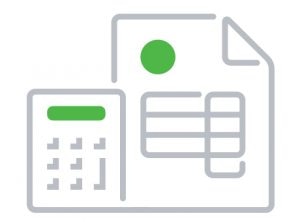Tax definitions and terms
Here are the key definitions and business examples you’ll need for all of your tax questions — with more information available in the below links.
A business number is a series of nine digits that the Canada Reserve Agency (CRA) uses to identify your business in communications with the federal government. Businesses with at least one employee typically need to register for a business number.
A corporation key is a password assigned by the CRA. You can use this to access the Online Filing Centre, which processes your business’s tax information.
A deferred tax is a current tax payment that you push into the future, often through an investment or retirement account. Inflation and payment control are the main benefits of these taxes.
Excise duty is a tax charged on certain Canadian products, such as wine, spirits, and tobacco. These products incur excise duty at the point of manufacture before they are sold to customers.
A fiscal pardon is a type of tax amnesty that allows you to rectify any unpaid, unfiled, or unreported taxes from previous years without fear of large fines or criminal penalties. To take advantage of this tax pardon program, you must apply with the CRA.
An inclusion rate is the rate that the CRA uses to determine taxable capital gains and allowable capital losses. This helps you figure out how the profit or loss from the sale of property fits into your tax return.
Marginal income and marginal income tax may sound similar, but knowing the difference is key to running your business. Marginal income refers to the difference between sales revenue and variable costs, and marginal income tax refers to tax brackets.
Marginal and effective rates can help you develop a strategy for a tax year. Marginal tax rates are based on the income tiers that the Canada Revenue Agency uses at the federal level, and your total tax liability as a percentage of your income is your effective tax rate.
NOPAT is a simple formula: revenue minus operating expenses minus taxes. This measures your company’s after-tax profit typically used to compare financial results over time — or to calculate economic value added.
Old age security clawback refers to the pension you receive if you’re 65 years or older — and if the Canadian government takes back money that it previously paid. This commonly occurs when the government imposes a special tax on old age security payments for certain individuals or income levels.
Operating leases and capital leases are both options when you need buildings or equipment for your business. An operating lease allows you to occupy property without the risks (or benefits) of owning it, while a capital lease gives you ownership rights in the property you’re leasing, while the lessor finances it.
A payment “in lieu” of taxes is what you pay the federal government instead of paying taxes. This typically comes up when the government compensates a municipality for services (such as water, roads, garbage, etc.) without giving up its overall tax exemption status.
A prepaid asset is a financial resource available for future use. You can use it over time, or it may be something you benefit from down the road.
Provincial and territorial corporate tax rates are the rates that provincial and territorial governments levy on your corporate profits. This is one factor in how much you’ll pay on taxes.
The acronyms PST and TVQ/QST both relate to sales tax. PST stands for provincial sales tax, which is applied when a province doesn’t participate in the Canadian harmonized sales tax. TVQ/QST stands for Taxe de Vente du Québec/Quebec Sales Tax, which Quebec collects on sales or supplies of most services and property.
A refundable tax credit lowers what you owe to the CRA and reduces your tax liability — even if you don’t owe any taxes or if it takes your liability to less than zero.
A robot tax applies to your business if you’ve used a robot to automate a process or replace workers in your business. It requires you to pay the government a tax based on how much money each robot makes or the profits that come from the labour savings of a robotic workforce.
A standby charge reports the benefit your employee gets when you make your owned or leased automobile available for their personal use.
A transit number is a series of five digits that identifies your specific bank branch. This is the first series of numbers listed along the bottom of a cheque.




